Message 1855, Mar 26, 2004
Hi Shark and the rest of the group. Regarding the SPH-4 in Navy service, you would have to
go back a ways, but the original SPH-3 had a single visor housing. If I had it close by, I
could read the tag for you from the one in the collection, but it is dated 1965 and is
clearly and SPH-3. The SPH-3B I believe may have incorporated the dual visor system as
part of the change in designation. With that said, there is another part to the story.
I at one time, picked up an SPH-4 that was painted white, and had been fit with a VERY
early Navy ( complete with decal ) single visor housing, but had US Army comm gear. Not
long after this, I read an article about how the navy acquired a bunch of ex-Army UH-1
Hueys helo's to use in river interdiction missions and support of the brown water navy as
it was called. My thoughts on the odd white painted SPH-4 with the navy housing was that
maybe the ex Army helo's may have still been fit with Army type comms, so helmets may have
been, necessarily SPH-4's, but made a bit more 'appropriate " with the addition of
the white paint and Navy acknowledgment on the housing.
The visor housing on this helmet was of the type made of fiberglass and using the unique
wire frame attached to the shell for the visor lock knob to fastens to......it locks
completely independently of the housing itself and often uses a knurled aluminum lock knob
instead of the more common plastic type ( it has a very wide slot therefore and is easily
recognized ) . It is of note, that with the 1965 date on the SPH-3, this basic type of
shell / helmet was in use by the Navy at least 3 years before the US Army started issuing
the SPH-4 to their aircrews. Just another possibility !
Any other thoughts ? Regards, Milehigh





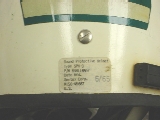


SPH-3, the single visor predecessor to the SPH-3B and
-3C helmets. This example is dated 1965.
Milehigh's own comments to the pictures run as follows, "Things of note on the
SPH-3.....plastic
friction strips on visor housing, ear cup foam inserts like those found on BPH-1 &2's
of the time...
though this is not surprising as this would have been "state of the art " at the
time, the navy
comms....both rear plug and boom & mic ( M-6A / UR ) but of great interest to me, are
the lack of
the elastic crossed straps for ear cup tensioning and the holes in the shell for them as
with all subsequent SPH helmets. Looks like thick foam rubber spacer pads, very much like are now used
on
HGU helmets to get a snug fit ! Unfortunately, they have "gone back to mother
earth" as it were.
I also have a parts helmet ( SPH-3 ) dated 3-65 and it has the same ear cup
tensioning system. Pictures
© Milehigh
Message 1959, Apr 24, 2001
Hi Pilot and others,
Thought you might find the enclosed pictures interesting. They show an SPH-3B helmet in
olive drab and with lip light. As I understand it the SPH-3B helmet was mainly used in US
Navy and USMC but obviously they also come in an army version. This particular helmet [may
have been] issued to a Danish Army helicopter pilot during his basic training at Fort
Rucker and afterwards he brought it home to Denmark and used it in the Danish Army Air
Squadron. Anybody else who knows about SPH-3Bs in army use?
Cheers, Bluelight
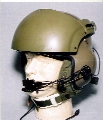
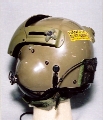
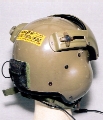
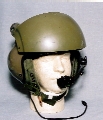
Message 1227:
Hi DocBoink et al, I finally dug out that old photo of my instructor and me in a T-17
Supporter. It is not possible to see it from the picture but it was taken at 500 feet on
downwind to our former training base Avnoe. Helmets are SPH-3B and the only decoration is
the pilot's abbreviated name on the visor housing. We use a system where pilots get a
three-letter "handle" or pilot's name constructed from the letters of his real
name. My instructor's name was Teddy Dansted and his pilot's name "NAD". Air
traffic controller students had two-letter and officers cadets four-letter handles. This
is why my helmet reads "SE" (Bluelight 14 was assigned later when I became a
fighter controller. It is actually the callsign of the commanding officer at Control &
Reporting Squadron 601 in Skagen). Officers do not fly any more so the four-letter handles
have dissappeared again but pilots use them and keep them throughout their service life.
It happens, though, that a new pilot is assigned to a squadron where a more experienced
pilot has the same pilot's name. Then the newcomer must change. Air Traffic Controllers
use their two-letter name to sign in logs and flight strips and they are assigned
centrally, assuring that there is no overlap. The same should be the case with the pilots
but from time to time the system slips. The blue strap around my neck has nothing to do
with flight gear. It is my camera neckstrap. Cheers, Bluelight 14
